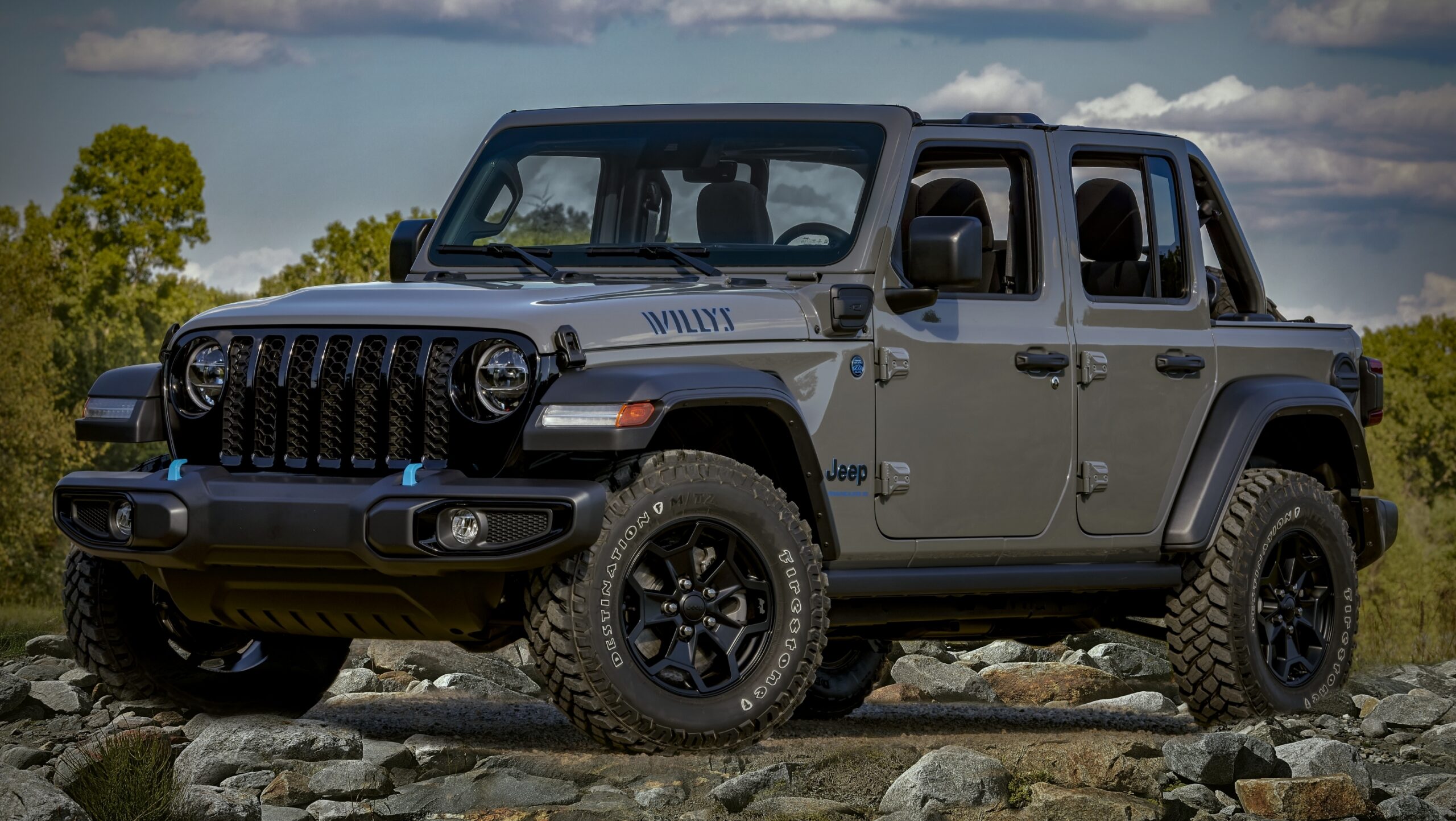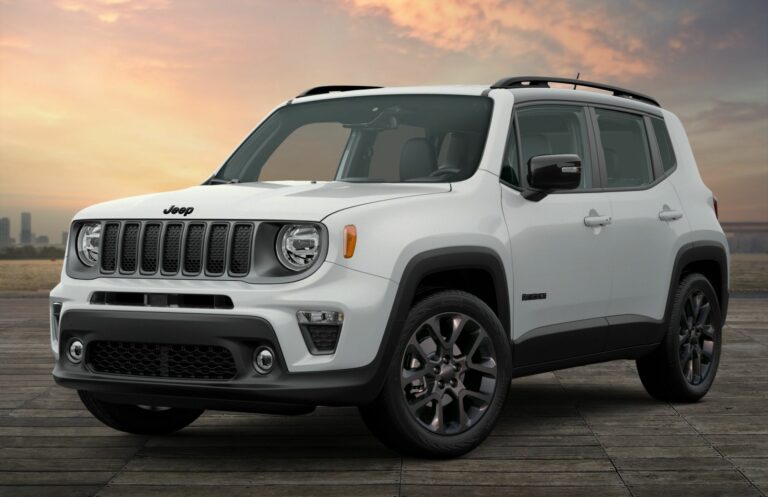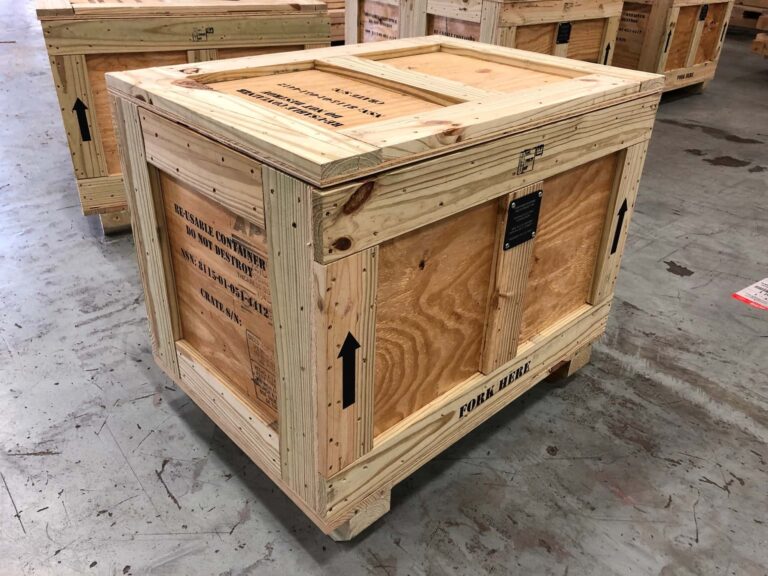Jeep 5.9 Engine For Sale: Unleashing the Magnum Powerhouse
Jeep 5.9 Engine For Sale: Unleashing the Magnum Powerhouse jeeps.truckstrend.com
The roar of a V8 engine, the sheer torque that effortlessly pulls you over obstacles, and a heritage deeply rooted in American automotive history – these are just some of the reasons why the Jeep 5.9L Magnum V8 engine remains a highly sought-after powerplant. Originally a special edition heart for the iconic 1998 Grand Cherokee ZJ 5.9 Limited, and a workhorse in various Dodge trucks, this 360 cubic inch (5.9-liter) beast has achieved legendary status among enthusiasts. Whether you’re looking to restore a classic ZJ, undertake an ambitious engine swap, or simply appreciate raw, dependable power, the quest for a "Jeep 5.9 Engine For Sale" is a journey into a world of robust performance and mechanical satisfaction.
This comprehensive guide aims to be your ultimate resource in understanding, locating, inspecting, and ultimately acquiring one of these magnificent engines. We’ll delve into what makes the 5.9L Magnum so desirable, where to find it, what to look for, and crucial considerations for installation and beyond.
Jeep 5.9 Engine For Sale: Unleashing the Magnum Powerhouse
The Legend of the 5.9L Magnum V8 – Why It’s Still Coveted
Introduced as the pinnacle of performance for the Grand Cherokee line, the 1998 ZJ 5.9 Limited was a wolf in sheep’s clothing, largely thanks to its unique 5.9L Magnum V8. While the 5.2L V8 was a popular option, the 5.9L took things to another level.
Key Specifications & Attributes:
- Displacement: 5.9 liters (360 cubic inches)
- Configuration: V8, Overhead Valve (OHV)
- Power Output (Stock ZJ): Approximately 245 horsepower and a mighty 345 lb-ft of torque.
- Block Material: Durable cast-iron block.
- Torque: Known for its impressive low-end torque, making it excellent for towing, off-roading, and brisk acceleration.
- Reliability: Generally considered a robust and reliable engine when properly maintained.
- Upgrade Potential: Its strong foundation makes it highly receptive to aftermarket modifications, allowing for significant power gains.

The 5.9L Magnum’s appeal extends beyond the 1998 ZJ. Its commonality with other Magnum engines (like the 5.2L) means parts availability is good, and its relatively simple design makes it approachable for home mechanics. For many, it represents the last of the truly "old-school" Mopar V8s that combine raw power with straightforward mechanics, making it an ideal candidate for restoration projects, performance upgrades in other Jeeps (like XJs and TJs), or as a direct replacement for a worn-out engine.
Where to Find a Jeep 5.9 Engine For Sale – Your Sourcing Guide
Locating a 5.9L Magnum engine can be an exciting hunt. Here are the most common avenues to explore:
-
Online Marketplaces:
- eBay Motors: A vast inventory, often including complete engines, long blocks, and short blocks from various sellers, including salvage yards and engine rebuilders. Be sure to check seller ratings and return policies.
- Craigslist/Facebook Marketplace: Excellent for local deals. You can often find engines pulled from donor vehicles or project cars. Exercise caution and arrange to inspect in person.
- Dedicated Forums & Groups: Jeep forums (e.g., NAXJA, JeepForum), Mopar enthusiast forums, and Facebook groups dedicated to ZJ Grand Cherokees or Magnum engines often have "for sale" sections where members list engines.
-
Salvage Yards/Auto Recyclers:
- Local Yards: Visiting local junkyards can yield hidden gems. You might even be able to inspect the donor vehicle before the engine is pulled.
- Online Databases (e.g., Car-Part.com): These sites aggregate inventories from thousands of salvage yards across North America, allowing you to search for specific parts like a 5.9L engine and compare prices.
-
Specialized Engine Suppliers & Remanufacturers:
- Companies that specialize in rebuilding and selling engines often offer remanufactured 5.9L Magnum units. These typically come with a warranty, higher price tag, but significantly reduced risk compared to a used engine. Examples include Jasper Engines, ATK Engines, or smaller, reputable local engine shops.
-
Performance & Off-Road Shops:
- Some shops that specialize in Jeep or Mopar performance might have connections to suppliers, or even cores they’ve pulled from customer upgrades. It’s worth calling around.
Practical Advice: Be wary of deals that seem "too good to be true." Always prioritize sellers with good reputations and clear communication. Ask for photos, videos, and detailed information about the engine’s history.
What to Look For When Buying a 5.9L Magnum – Inspection Checklist
Purchasing a used engine requires careful due diligence. Here’s what to look for:
-
Visual Inspection (External):
- Oil Leaks: Check valve covers, oil pan, front and rear main seals, and oil filter housing for significant leaks. Minor weeping might be acceptable, but heavy drips indicate issues.
- Coolant Leaks: Inspect the water pump, thermostat housing, radiator hoses, and around the cylinder heads for signs of coolant leaks (often leaves a colored residue).
- Corrosion/Rust: Excessive rust on the block, heads, or exhaust manifolds can indicate neglect or exposure to harsh conditions.
- Damaged Components: Look for cracked or broken sensors, wiring harness damage, or missing components (e.g., alternator, power steering pump, AC compressor – often not included with a long block).
- Cracked Block/Heads: While rare, severe overheating or freezing can crack the block or heads. Look for visible cracks, especially around freeze plugs or exhaust ports.
-
Internal Indicators (if accessible):
- Oil Condition: Pull the dipstick. The oil should not be milky (indicating coolant contamination) or have metallic flakes (indicating severe internal wear). Dark oil is normal, but sludge is not.
- Coolant Condition: If visible, check the coolant reservoir. It should be clean, not sludgy or oily.
- Spark Plugs: If available, inspect the spark plugs for fouling, oil, or signs of detonation.
- Compression Test: If possible, perform a compression test. Consistent readings across all cylinders are a good sign of healthy rings and valves.
-
Mileage & History:
- Ask for the donor vehicle’s VIN to verify mileage (if possible) and check for accident history.
- Inquire about the reason the engine was removed. Was the vehicle totaled? Was the engine replaced due to a known issue?
- Ask if the engine was running when pulled and if there were any known issues.
-
Seller’s Credibility:
- Read reviews, check feedback (especially on eBay).
- A reputable seller will be transparent and willing to answer all your questions, providing additional photos or videos if requested. Avoid sellers who are evasive or pushy.
Understanding the Different Types of 5.9L Engines Available
The term "Jeep 5.9 Engine For Sale" can encompass several types, each with different price points and risk levels:
- Used/Salvage Engines: These are typically pulled directly from donor vehicles in salvage yards. They are sold "as-is" with minimal or no warranty.
- Pros: Cheapest option.
- Cons: Highest risk; unknown internal condition, no guarantee of running. Best for those with mechanical expertise willing to rebuild or verify thoroughly.
- Tested Used Engines: Some salvage yards or private sellers will offer engines that have been "tested" – meaning they were heard running before removal, or a basic compression test was performed.
- Pros: Slightly lower risk than "as-is."
- Cons: Still no guarantee of long-term reliability.
- Rebuilt/Remanufactured Engines: These engines have been disassembled, cleaned, inspected, and had worn or damaged components (pistons, rings, bearings, valves, seals) replaced. The block and heads are often machined to factory specifications. They usually come with a warranty.
- Pros: Significantly lower risk, often like a new engine internally, comes with a warranty.
- Cons: Higher cost.
- Long Block vs. Short Block vs. Complete:
- Short Block: Includes the engine block, crankshaft, connecting rods, and pistons. You’ll need to supply cylinder heads, valvetrain, and all external components.
- Long Block: Includes the short block plus cylinder heads, valvetrain (camshaft, lifters, pushrods, rockers, valves), and usually the oil pan and timing cover. This is the most common offering.
- Complete Engine: Includes the long block plus intake manifold, exhaust manifolds, throttle body, sensors, wiring harness, and potentially accessories like the alternator, power steering pump, and AC compressor. True "complete" engines are rare and expensive for a 5.9L, as accessories are often sold separately.
Tips: Understand what is included in the sale. A cheaper price might mean you’re getting a bare long block, requiring you to source many additional components.
Installation Considerations and Performance Upgrades
Acquiring a 5.9L Magnum is just the first step. Installation, especially if it’s a swap into a vehicle other than a 1998 ZJ, requires careful planning.
Compatibility & Swaps:
- 1998 ZJ Grand Cherokee: A direct bolt-in replacement, assuming you have the correct 46RE transmission and engine computer (ECU).
- Other Jeep Models (XJ Cherokee, TJ Wrangler, etc.): Swapping a 5.9L into these vehicles is a popular but involved project. It typically requires:
- Engine mounts and transmission adapter plates.
- Custom exhaust.
- Wiring harness modification or replacement (e.g., using a standalone harness or adapting the donor ZJ harness).
- ECU reprogramming or a standalone engine management system.
- Cooling system upgrades (larger radiator).
- Fuel system upgrades.
- Often, transmission upgrades (e.g., 46RE or manual conversion).
Common Issues & Recommended Maintenance:
- Plenum Gasket: The stock plenum gasket on Magnum engines is a known weak point. It’s highly recommended to replace it with an aftermarket "belly pan" kit (e.g., Hughes Engines) that seals better and prevents oil consumption and carbon buildup in the intake. Do this before installation.
- Water Pump & Thermostat: Replace these wear items as a preventative measure.
- Sensors: Consider replacing the oxygen sensors, crankshaft position sensor, camshaft position sensor, and manifold absolute pressure (MAP) sensor while the engine is out.
- Spark Plugs & Wires: Install new spark plugs and quality ignition wires.
- Fluids: Ensure all fluids (oil, coolant) are fresh upon initial startup.
Performance Upgrades:
The 5.9L Magnum responds very well to common bolt-on and internal modifications:
- Intake Manifold: Aftermarket manifolds like the M1 (single plane) or AirGap (dual plane) significantly improve airflow.
- Headers: Long-tube headers are a great way to free up horsepower.
- Camshaft Upgrade: A more aggressive camshaft can dramatically change the engine’s power band.
- Throttle Body: Larger throttle bodies improve throttle response and airflow.
- Tuning: A custom tune (e.g., via SCT, HP Tuners) is essential to optimize fuel and ignition timing for any significant modifications.
- Cylinder Head Work: Porting, larger valves, or aftermarket heads can unlock substantial power.
Challenges: Wiring complexity for swaps, potential for unforeseen issues with used engines, and finding experienced mechanics familiar with Magnum engines if you’re not doing the work yourself.
Jeep 5.9 Engine For Sale: Estimated Price Guide
Please note that these prices are estimates and can vary widely based on condition, mileage, seller, location, and what components are included (e.g., bare long block vs. full dress).
| Engine Type/Condition | Typical Price Range (USD) | What’s Generally Included | Warranty/Risk Level | Notes & Considerations |
|---|---|---|---|---|
| Used/Salvage (As-Is) | $700 – $1,500 | Long block, sometimes partial accessories. | None/High | Highest risk. Best for rebuilds or very thorough inspection. |
| Used/Salvage (Tested) | $1,200 – $2,500 | Long block, sometimes partial accessories. | Limited/Medium | Heard running, compression tested. Still some risk. |
| Remanufactured/Rebuilt | $2,500 – $4,500+ | Complete long block, new wear parts. | 1-3 Year/Low | Lower risk, higher initial cost. Often requires core return. |
| "Complete" Used (Rare) | $2,000 – $3,500+ | Long block + intake, exhaust, some accessories, wiring. | None/Medium | Highly variable condition. Best for direct swaps. |
| Core Engine (for rebuild) | $300 – $700 | Bare block, heads (often disassembled). | None/Very High | Ideal for a full custom build. |
Additional Costs to Consider:
- Shipping: Engines are heavy and shipping can be significant ($200-$800+).
- Installation: DIY labor is free, but professional installation can range from $1,000 – $3,000+ depending on complexity (replacement vs. swap).
- Ancillaries: New water pump, thermostat, sensors, spark plugs, wires, plenum gasket kit, fluids, hoses, belts ($300-$700).
- Performance Parts: Varies widely depending on desired upgrades.
Frequently Asked Questions (FAQ)
Q1: What vehicles did the 5.9L Magnum engine primarily come in?
A1: The 5.9L Magnum V8 was most famously used in the 1998 Jeep Grand Cherokee ZJ 5.9 Limited. It was also a common engine in various Dodge Ram 1500/2500/3500 trucks, Dodge Dakota, and Dodge Durango from the mid-to-late 1990s.
Q2: Is the 5.9L Magnum a reliable engine?
A2: Yes, the 5.9L Magnum is generally considered very reliable and durable due to its robust cast-iron construction. Like any engine, proper maintenance is key. Its main common issue is the plenum gasket, which should be addressed.
Q3: What’s the main difference between the 5.2L and 5.9L Magnum engines?
A3: Both are part of the Magnum V8 family. The 5.9L (360 cu in) has a larger bore and/or stroke compared to the 5.2L (318 cu in), resulting in greater displacement and, consequently, higher horsepower and significantly more torque, especially at lower RPMs.
Q4: Can I swap a 5.9L Magnum into my Jeep XJ or TJ?
A4: Yes, it’s a popular and rewarding swap for XJ Cherokees and TJ Wranglers, as well as older CJs. However, it requires significant fabrication, wiring, cooling system upgrades, and often transmission adaptations. It’s not a simple bolt-in procedure.
Q5: Are parts readily available for the 5.9L Magnum?
A5: Yes, parts are widely available. Because the 5.9L shares many components with the more common 5.2L Magnum and other Mopar small-block engines, finding replacement parts, performance upgrades, and even rebuild kits is generally not an issue.
Q6: What’s the "plenum gasket" issue I keep hearing about?
A6: The factory plenum (intake manifold) gasket on Magnum engines is prone to failure, allowing oil to be drawn from the lifter valley into the intake manifold. This causes oil consumption, carbon buildup, and can lead to pinging/detonation. Replacing it with a high-quality aftermarket "belly pan" kit is a highly recommended preventative measure.
Conclusion
The Jeep 5.9L Magnum engine stands as a testament to American V8 power and durability. Its legendary status, fueled by its performance in the iconic 1998 Grand Cherokee ZJ 5.9 Limited and its widespread use in Dodge trucks, ensures its continued demand. For those seeking to inject serious torque and horsepower into their Jeep, or simply preserve a piece of Mopar history, finding a "Jeep 5.9 Engine For Sale" can be the start of a truly rewarding project.
While the search and acquisition process requires diligence and a keen eye for detail, the payoff is a powerful, reliable engine that offers immense satisfaction, whether you’re tackling challenging trails, cruising the highway, or simply enjoying the unmistakable rumble of a classic V8. Invest wisely, plan meticulously, and prepare to unleash the Magnum powerhouse.





